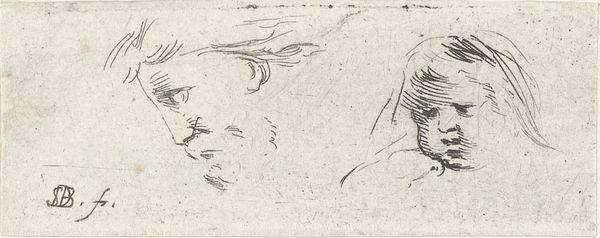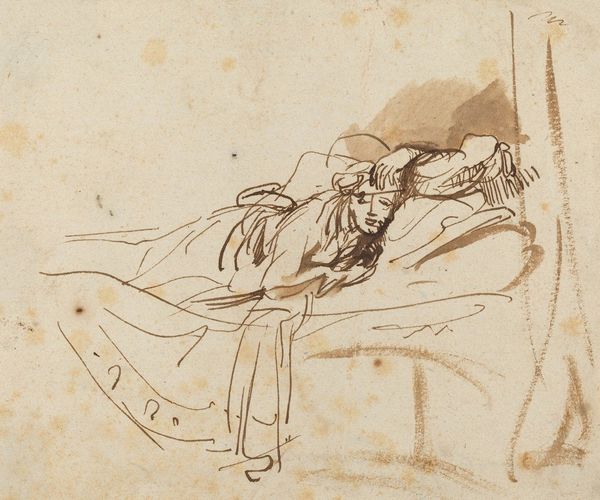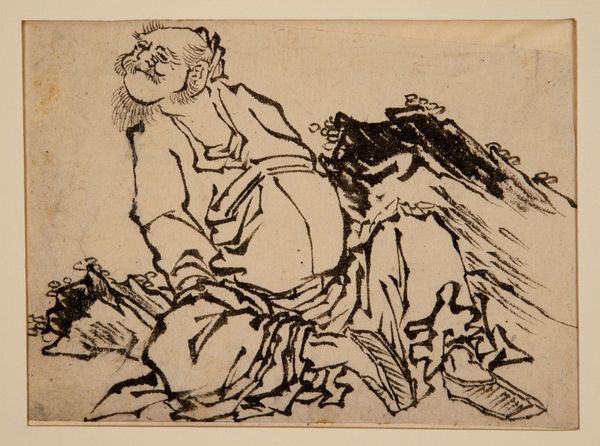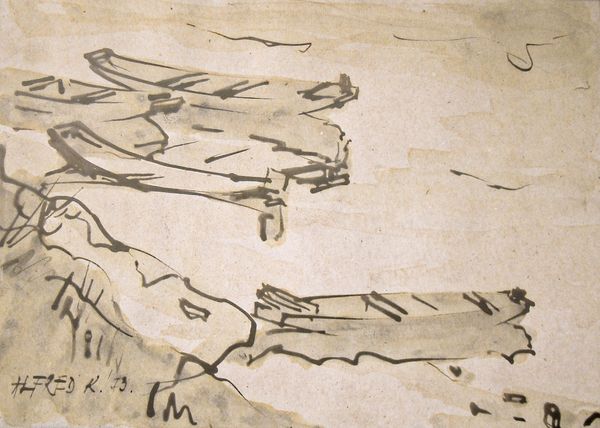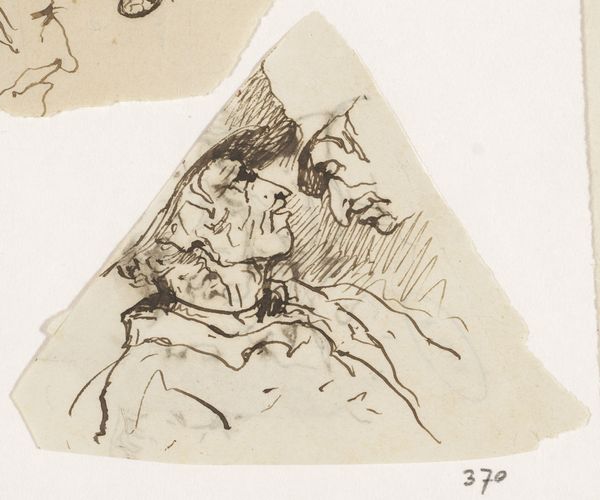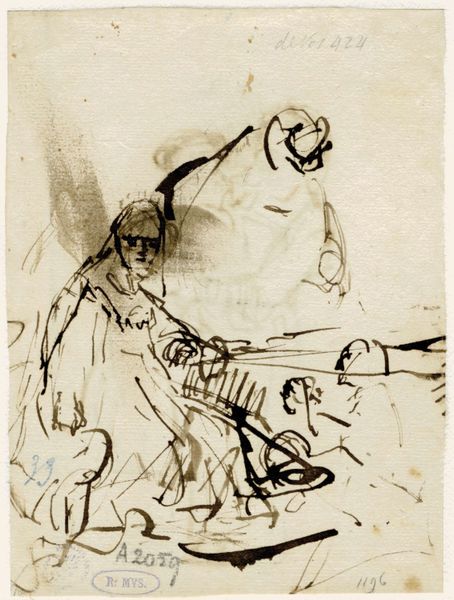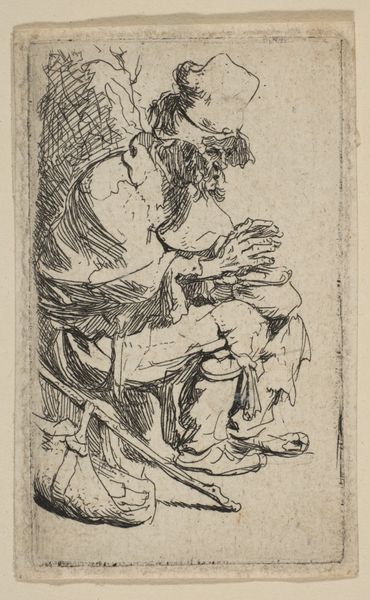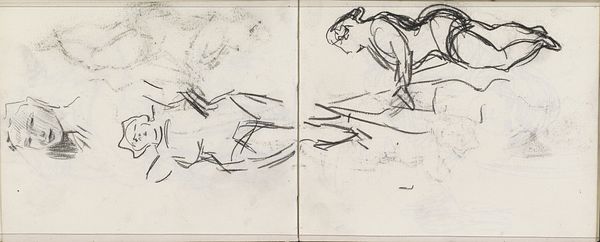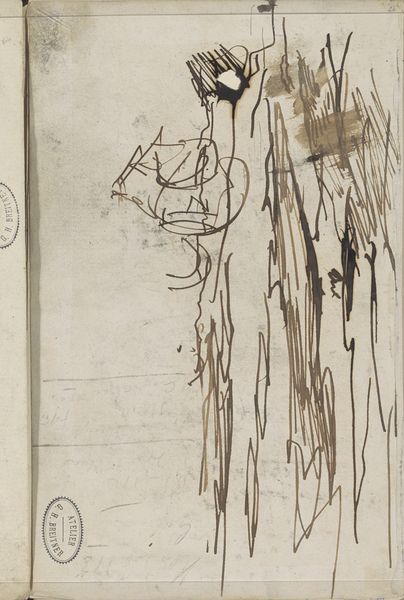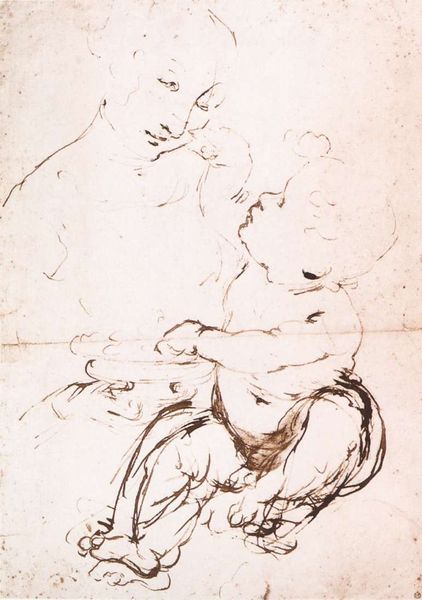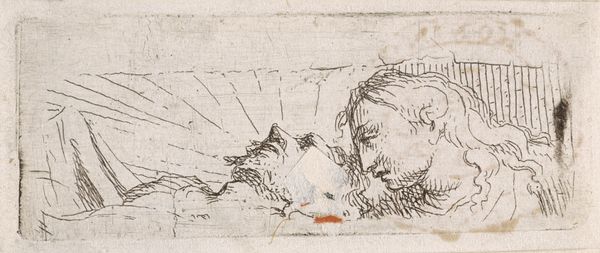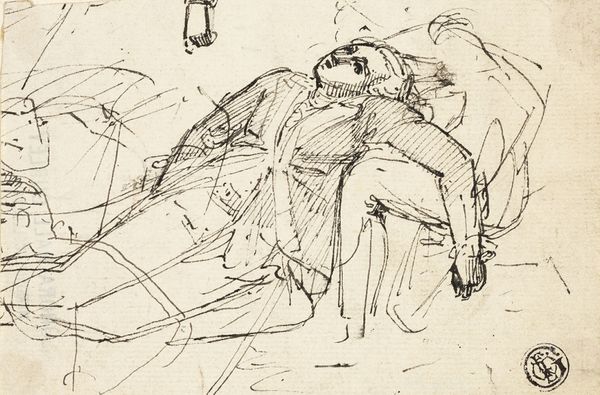
drawing, paper, ink
#
portrait
#
drawing
#
baroque
#
paper
#
ink
#
genre-painting
#
nude
Copyright: Public domain
Editor: This is Rembrandt van Rijn's "Saskia Asleep In Bed," an ink drawing on paper from 1638. It feels surprisingly intimate, almost like a stolen moment. What do you see in this piece? Curator: I see a radical act of representation. Consider the male gaze so prevalent in art history. Here, Rembrandt depicts his wife, Saskia, not as an object of desire, but in a state of vulnerability and rest. How does this challenge conventional power dynamics within marriage and artistic portrayal, particularly within the context of 17th century Netherlands? Editor: That's fascinating. I hadn't thought about it in terms of challenging power. I was more focused on the tenderness of the scene. Is it unusual for artists of that era to portray their wives so casually? Curator: Absolutely. Think about the societal expectations placed on women then – to be pious, obedient, and primarily decorative. Rembrandt's choice to show Saskia asleep, unguarded, and seemingly unposed disrupts those expectations. Her vulnerability becomes a form of quiet strength. Does it make you consider other artists who use intimacy to push boundaries of power? Editor: It does. It also makes me wonder about Saskia's own agency within their relationship and whether Rembrandt was truly trying to break from convention or simply capture a private moment, which could still be interpreted through a male gaze lens. Curator: Exactly! These are the vital questions we need to be asking. Even a seemingly tender image can reveal complex dynamics of gender, power, and representation. We must continue to contextualize it, acknowledging the social, political, and cultural forces at play. Editor: I agree. Thinking about it this way, it prompts me to seek the artist's underlying social intentions or the cultural statements in their works. Curator: And in turn we examine ourselves and our times, hopefully leading to new, inclusive approaches.
Comments
No comments
Be the first to comment and join the conversation on the ultimate creative platform.
